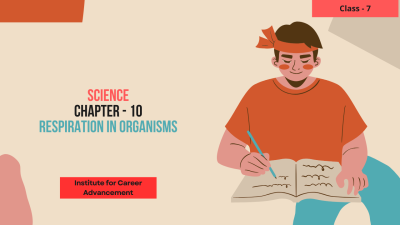Respiration in Organisms - Class 7

₹190
₹599
Respiration in organisms is the biochemical process through which cells extract energy from organic molecules, typically glucose, to produce ATP (adenosine triphosphate). This energy is essential for various cellular activities, including growth, movement, and maintenance of life processes. There are two main types of respiration: Aerobic Respiration: Occurs in the presence of oxygen and involves the complete breakdown of glucose into carbon dioxide and water, releasing a large amount of ATP. Anaerobic Respiration: Occurs in the absence of oxygen and produces less ATP compared to aerobic respiration. It includes glycolysis followed by fermentation pathways, resulting in by-products like lactic acid (in animals) or ethanol and carbon dioxide (in yeast). জীবের শ্বসন হল জৈব রাসায়নিক প্রক্রিয়া যার মাধ্যমে কোষগুলি জৈব অণু, সাধারণত গ্লুকোজ থেকে শক্তি বের করে ATP (এডিনোসিন ট্রাইফসফেট) তৈরি করে। এই শক্তি বিভিন্ন সেলুলার ক্রিয়াকলাপের জন্য প্রয়োজনীয়, যার মধ্যে বৃদ্ধি, চলাচল এবং জীবন প্রক্রিয়াগুলির রক্ষণাবেক্ষণ সহ। দুটি প্রধান ধরনের শ্বসন আছে: অ্যারোবিক শ্বসন: অক্সিজেনের উপস্থিতিতে ঘটে এবং কার্বন ডাই অক্সাইড এবং জলে গ্লুকোজের সম্পূর্ণ ভাঙ্গন জড়িত, প্রচুর পরিমাণে ATP নির্গত করে। অ্যানেরোবিক শ্বসন: অক্সিজেনের অনুপস্থিতিতে ঘটে এবং বায়বীয় শ্বাস-প্রশ্বাসের তুলনায় কম ATP উৎপন্ন করে। এর মধ্যে রয়েছে গ্লাইকোলাইসিস এর পরে গাঁজন পথ, যার ফলে উপ-পণ্য যেমন ল্যাকটিক অ্যাসিড (প্রাণীতে) বা ইথানল এবং কার্বন ডাই অক্সাইড (খামিরে)।
Learn more
 0
0 